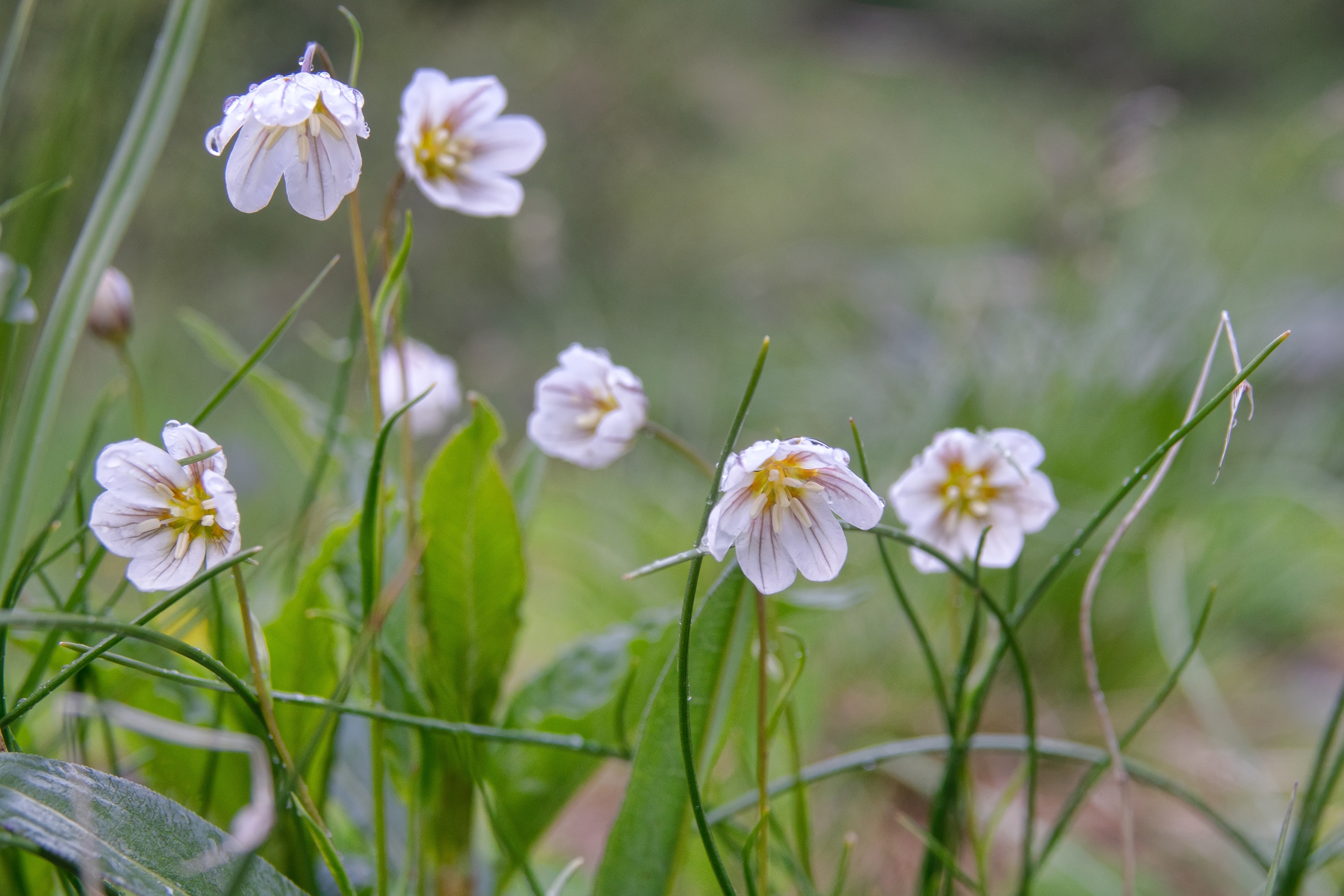Common Alplily
(Gagea serotina)

Description
Gagea serotina, synonym Lloydia serotina, is an Arctic–alpine flowering plant of the lily family. It is widespread across the mountainous parts of western North America, from Alaska to New Mexico, and in Europe is found in the Alps and Carpathians, as well as in Great Britain. It is also native to much of Central Asia, Siberia, China, Nepal, Mongolia, Korea and Japan. It was originally known as mountain spiderwort, but is now known in Great Britain as the Snowdon lily, or in Welsh as brwynddail y mynydd (meaning "rush-leaves of the mountain"). In North America, it is called the common alplily. It is also known as Snowdon alplily. For most of the year, the plant is visible only as long, curving, stiff, grass-like leaves, often protruding through cushions of other plants. The flowers appear from June onwards (despite the name serotina, meaning "late-flowering"), and are borne at the end of long stalks. The flowers themselves are white, with purple or reddish veins along the tepals. In Great Britain, G. serotina is an ice age relict, only found on a few inaccessible sites in Snowdonia National Park, Cwm Idwal being one such site, and seems to have developed in isolation since the glacial period. Although the total Welsh population may number fewer than 100 bulbs, the Welsh plants are genetically distinct from other populations of the same species, and are more diverse than those found in the Alps. While their inaccessibility protects the plants to a certain degree against grazing by sheep and trampling by hikers, they are likely to suffer under climate change, and it is believed that G. serotina will be the first plant to become extinct in Britain as a result of global warming. Plans are therefore being considered to introduce the plant to sites in Scotland, where it may survive in the longer term. It became a protected species in the UK in 1975 under the Conservation of Wild Creatures and Wild Plants Act. Gagea is a large genus of spring flowers in the lily family. It is found primarily in Eurasia with a few species extending into North Africa and one species (Gagea serotina) in North America. The genus is named after the English naturalist Sir Thomas Gage (1791-1820). They were originally described as species of Ornithogalum, which, together with the usual yellow colour of the flowers, explains the English name yellow star-of-Bethlehem for the common European species, Gagea lutea.
Taxonomic tree:







